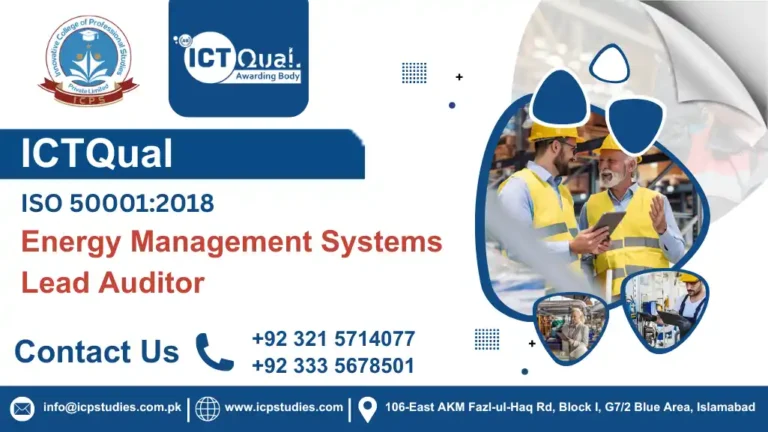In the realm of workplace safety, certain environments pose unique challenges that demand specialized knowledge and skills. Confined spaces—often tight, hazardous areas with limited entry and exit points—are prime examples where adherence to stringent safety protocols is critical. For professionals tasked with operations in such environments, the Level 3 Award in Work in Confined Space stands as a beacon of expertise and preparedness.
The Level 3 Award in Work in Confined Space is a specialized certification aimed at equipping individuals with the necessary competencies to safely navigate and operate within confined spaces. These spaces can range from tanks, silos, and tunnels to sewers, storage bins, and underground vaults. The certification focuses on imparting comprehensive knowledge and practical skills essential for identifying, assessing, and mitigating risks associated with confined space work.
Level 3 Award in Work in Confined Space signifies more than just obtaining a certification—it signifies a commitment to mastering the complexities of working safely in challenging environments. By investing in this certification, individuals and organizations prioritize safety, reduce risks, and ensure compliance with stringent regulatory requirements. Ultimately, the Level 3 Award in Work in Confined Space empowers professionals to navigate confined spaces confidently, safeguarding lives and promoting a culture of safety in their respective industries.
All About ICTQual Level 3 Award in Work in Confined Space
Course Overview
The Level 3 Award in Work in Confined Space is a specialized certification designed to equip individuals with the knowledge, skills, and competence necessary to work safely and effectively in confined spaces. Confined spaces are defined as areas that have limited means of entry and exit, are not designed for continuous occupancy, and may pose risks due to hazardous atmospheres, engulfment hazards, or other dangerous conditions.
The Level 3 Award in Work in Confined Space represents a commitment to mastering the complexities of working safely within confined environments. By acquiring this certification, individuals and organizations demonstrate a dedication to prioritizing safety, reducing risks, and ensuring compliance with regulatory requirements. Ultimately, certified professionals are equipped to navigate confined spaces confidently, safeguarding themselves and their colleagues while fostering a culture of safety in their workplaces.
Study Units
- Understanding Confined Spaces
- Legislative and Regulatory Framework
- Risk Assessment and Hazard Control
- Safety Equipment and Personal Protective Equipment (PPE)
- Entry and Exit Procedures
- Emergency Response and Rescue Operations
- Ventilation and Atmospheric Monitoring
- Confined Space Entry Permits and Procedures
To enroll in the ICTQual Level 3 Award in Work in Confined Space, participants typically need to meet the following requirements:
- Age Requirement: Participants should be at least 18 years old.
- Basic Literacy and Numeracy: A good understanding of English, along with basic literacy and numeracy skills, is essential for completing the course.
- Physical Fitness: Participants should be physically fit to work in confined spaces, as the tasks may be physically demanding.
- Relevant Experience: Prior experience in working in confined spaces or related industries is beneficial.
- Knowledge of Safety Regulations: Familiarity with health and safety regulations related to confined space work is advantageous.
- Course Registration: Participants must register for the course through an accredited training provider.
- Payment: Course fees must be paid as required by the training provider.
- Commitment to Attend: Participants should be prepared to attend the full duration of the course and complete any required assessments to receive certification.
The ICTQual Level 3 Award in Work in Confined Space is designed for:
- Construction Workers: Individuals who may need to enter confined spaces for various construction tasks.
- Maintenance Personnel: Workers involved in maintenance or repairs in confined areas, such as tanks, silos, or pipelines.
- Utility Workers: Employees in utilities (water, gas, electricity) who may work in confined spaces during installation or repair.
- Health and Safety Officers: Professionals responsible for ensuring safety practices and compliance in confined space operations.
- Emergency Responders: First responders who may need to rescue individuals from confined spaces.
- Supervisors and Managers: Those overseeing teams working in confined spaces and responsible for ensuring safety protocols are followed.
This course provides participants with the knowledge and skills needed to safely work in confined spaces, recognizing hazards and implementing appropriate safety measures.
Learning Outcome
Understanding Confined Spaces
- Learning Outcomes:
- Define what constitutes a confined space according to industry standards and regulatory definitions.
- Identify common types of confined spaces found in various industries.
- Understand the unique hazards associated with confined spaces, such as atmospheric risks, physical hazards, and potential for engulfment.
- Recognize the importance of thorough planning and preparation when working in confined spaces to ensure safety.
Legislative and Regulatory Framework
- Learning Outcomes:
- Identify and explain relevant health and safety legislation and regulations pertaining to confined spaces.
- Understand employer and employee responsibilities under these regulations.
- Interpret industry-specific guidelines and codes of practice related to confined space work.
- Apply legal requirements to ensure compliance and safe working practices in confined spaces.
Risk Assessment and Hazard Control
- Learning Outcomes:
- Conduct comprehensive risk assessments specific to confined spaces.
- Identify potential hazards, including atmospheric hazards (such as lack of oxygen, presence of toxic gases), physical hazards (such as confined space configurations), and biological hazards.
- Implement appropriate hazard controls and safety measures to mitigate identified risks effectively.
- Review and update risk assessments as necessary to maintain safety standards.
Safety Equipment and Personal Protective Equipment (PPE)
- Learning Outcomes:
- Demonstrate knowledge of the types and functions of safety equipment and personal protective equipment (PPE) used in confined spaces, including gas detectors, harnesses, communication devices, and retrieval equipment.
- Select appropriate PPE and safety equipment based on the specific hazards present in confined spaces.
- Inspect, maintain, and use PPE and safety equipment according to manufacturer guidelines and regulatory requirements.
- Ensure proper fitting and adjustment of PPE to maximize protection and minimize risks during confined space operations.
Entry and Exit Procedures
- Learning Outcomes:
- Describe safe entry and exit procedures for confined spaces, including the use of confined space entry permits.
- Explain the importance of continuous monitoring and communication during entry and work activities in confined spaces.
- Demonstrate techniques for controlling access to confined spaces to prevent unauthorized entry and ensure safety.
- Implement effective emergency procedures and evacuation plans specific to confined space incidents.
Emergency Response and Rescue Operations
- Learning Outcomes:
- Develop emergency response plans and procedures tailored to confined space environments.
- Practice confined space rescue operations, including techniques for retrieval and evacuation of personnel in distress.
- Coordinate rescue efforts effectively with emergency response teams and external support services.
- Conduct post-incident debriefings and reviews to identify lessons learned and improve emergency response readiness.
Ventilation and Atmospheric Monitoring
- Learning Outcomes:
- Explain the principles of ventilation and the importance of maintaining safe atmospheric conditions in confined spaces.
- Operate ventilation equipment and systems effectively to control hazardous atmospheres within confined spaces.
- Conduct atmospheric monitoring using gas detectors and other monitoring devices to assess air quality and detect potential hazards.
- Interpret monitoring results and take appropriate actions to ensure safe working conditions in confined spaces.
Confined Space Entry Permits and Procedures
- Learning Outcomes:
- Describe the purpose and components of confined space entry permits.
- Implement procedures for obtaining and issuing confined space entry permits, including pre-entry checks and authorization processes.
- Ensure compliance with permit conditions and restrictions during confined space operations.
- Monitor and document activities in accordance with permit requirements to maintain safety and regulatory compliance.
FAQs about ICTQual Level 3 Award in Work in Confined Space







